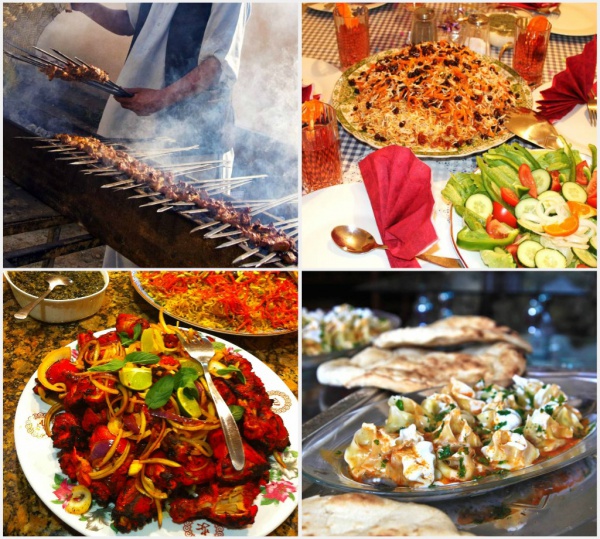Facts About Afghan cuisine
Afghan cuisine is a delightful blend of flavors, rooted in staple crops like wheat, maize, barley, and rice. The country’s culinary tapestry is enriched by a variety of native fruits, vegetables, and dairy products such as milk, yogurt, and whey. Each dish tells a story of Afghanistan’s ethnic and geographic diversity.
Some standout dishes include the celebrated rice dish Kabuli palaw, several other rice varieties like palaw and yakhni palaw, hearty stews known as qormah, savory dumplings called mantu, and a range of flavorful kebabs.
Rice dishes hold a special place in Afghan meals. Kabuli palaw, for instance, is a festive dish made with rice, meat, and a mix of sweet and savory toppings. Qormah dishes feature stewed meats paired with rice, offering a comforting and hearty meal. Mantu are delicious dumplings filled with meat or vegetables, often enjoyed with a yogurt-based sauce. Afghan kebabs, especially lamb kebabs, are beloved and typically served with naan, a type of flatbread.
A unique aspect of Afghan cuisine is quroot, a reconstituted dairy product. It's often served with dishes like ashak (dumplings with leek) and mantu, adding a distinct tangy flavor.
Different regions and ethnic groups bring their own specialties to the table. Pashtun cuisine, for example, is known for its meat-centric dishes like chapli kebab and sajji. The Hazara people, from central Afghanistan and western Pakistan, offer comforting dishes such as aash (a thick soup), daldah (a type of stew), and yakhni (a meat broth).
Special occasions in Afghan culture are marked by serving tea and sugared almonds, especially during the festival of Eid-e-Qorban, adding a touch of sweetness to the celebrations.

 China
China